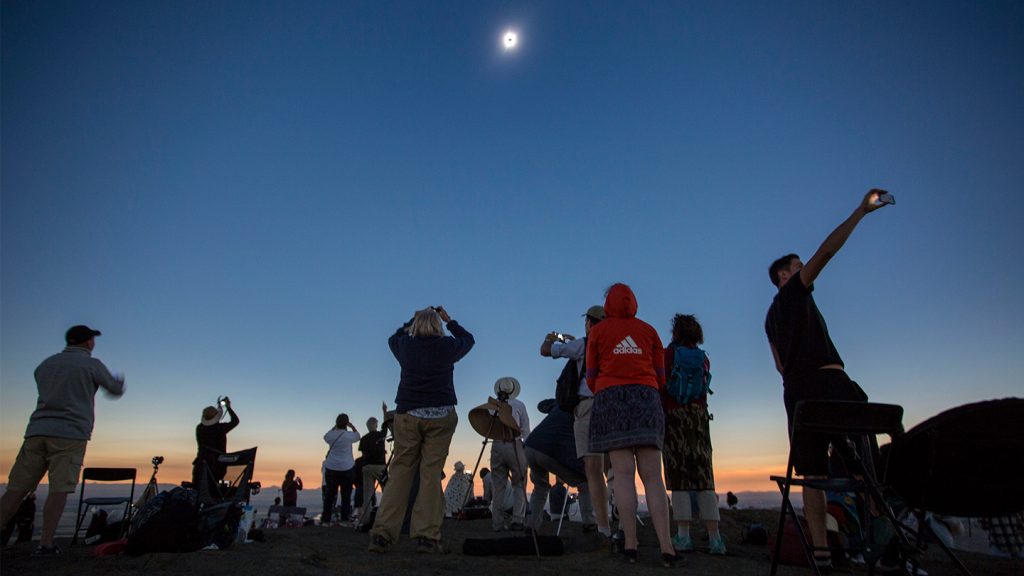During a total solar eclipse, colors may appear different due to atmospheric and visual effects. The atmosphere plays a role in color perception by scattering sunlight differently based on the wavelengths of light. In direct sunlight, objects reflect more red light, making reds appear brighter. However, during an eclipse, most of the light hitting objects is indirect, causing a shift towards blue in the color spectrum as objects reflect more blue light. This phenomenon is similar to what occurs during sunset or other dim-light conditions.
In terms of visual effects, the cones in our retina provide color vision in bright light, with the majority being tuned to detect red or green, and a smaller percentage detecting blue. During an eclipse or low-light conditions, the Purkinje effect comes into play. This effect causes a shift in eye sensitivity from red to blue in low light conditions. Both rods and cones contribute to vision in twilight conditions, with rods making blue and green wavelengths appear brighter while reds appear darker due to their sensitivity to dim light.
The exact mechanisms of how the Purkinje effect works are still debated in scientific papers. Eclipse glasses are essential for observing the Purkinje effect during an eclipse, as the glasses protect against harmful rays from the sun and allow for safe viewing of the event. Eclipse glasses are recommended by the American Astronomical Society and JAMA has published tips for safe viewing and what to do if vision is damaged while watching the eclipse. The Purkinje effect is a matter of perception and cannot be captured in pictures, requiring observers to experience it in person to notice the color shift.
For those interested in observing the Purkinje effect but are not in the path of totality, an experiment using red and blue squares of cloth can demonstrate the brightness reversal effect when lighting conditions change. Dimming the lights or wearing sunglasses can simulate the twilight conditions that trigger the Purkinje effect, showcasing how reds and blues appear differently depending on the lighting environment. Overall, the combination of atmospheric and visual effects during a total solar eclipse can result in a unique and intriguing shift in the perception of colors.


